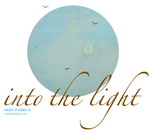Home » Jazz Articles » Extended Analysis » Francesca Han: Various Artists: Into the Light - Korean ...
Francesca Han: Various Artists: Into the Light - Korean Music III - Traditional Music & Korean Jazz
 Various Artists
Various Artists Into the Light: Korean Music III: Traditional Music & Korean Jazz
KAMS
2010
Although the differences in beat, rhythm and harmony that separate traditional Korean music and jazz may partially explain why jazz has been approached only relatively recently in Korea, in fact Korean traditional musicians are fundamentally suited to jazz given the large element of improvisation inherent in Korean folk styles. These two CDs offer a tantalizing slice of Korean jazz and improvised music, and represent part of the Korean Arts Management Service's (KAMS) efforts to promote Korean artists abroad. The first CD showcases how jazz has been absorbed by traditional Korean music, while the second presents Korean jazz artists, a number of whom have made a name for themselves in the United States.
On first listening to the eight traditional/jazz songs, what stands out is the insistent rhythm of the janggu drum which is common to nearly all Korean music. Pianist Miyeon and percussionist Je-Chun Park, however, have little to do with traditional Korean sounds on "Change 1." Miyeon's charging runs and tempestuous abstraction accompanied by Park's crashing percussion lean more towards the avant-garde jazz of Cecil Taylor, sandwiched between a melodic, riff-like motif which opens and closes the piece. Miyeon's jagged and undeniably dramatic piano playing (and Park's exhilarating percussion) is also heard on "Hwimori + Improvisation" by the seven piece Yesnajok. Layered rhythms, atmospheric gongs and a strident cornet combine to produce a heady, unique ensemble voice. Utterly distinctive too, are the sounds of Yoon-jeong Heo's geomungo which sounds like a darker berimbau. Heo's brooding solo gathers pace and intensity ominously.
The dynamic "Chaeolliim" of Baramgot merges traditional instruments with call-and-response between the harp-like gayageum and swirling flute. Flute and percsussion's lyrical passage is not a million miles away from Haripasad Chaurasia and Zakir Hussain's Making Music.(ECM, 1987). Quiet passages alternate with dramatic ensemble playing and the conclusion is climactic. Elsewhere, the pastoral "Afterimage" featuring Mina Jung on gayageum and Young-do Seo on acoustic bass could have been produced from an Arlid Andersen/Ralph Towner session. The Near East Quartet also inhabits territory close to ECM on the peaceful yet haunting "Earth and Humanity." The mournful saxophone of Sung-jae Son recalls Jan Garbarek and blends with Dong-Won Kim's shamanistic voice, subtle, drone-like electronics and funereal gongs to create a mood piece of stark beauty.
By way of complete contrast the electric quintet "Acid Rain" would pass as a Korean Jefferson Airplane playing jazz. Yu-sik Kim's guitar playing is particularly informed by jazz . Eun-kyoung Min's strongly folk-influenced vocals and the harsh-sounding ajeng of Ae-jin Kang , which sounds like a boozy violin keep the band with one foot firmly in the Korean tradition. Min's vocals climb and soar uninhibited as Kim, a melodic, understated guitarist, stretches out and drummer Kwang-hyoun Nam works his cymbals in dramatic exclamation. The Tori Ensemble closes the first CD with another strong, lingering tune. Driving percussive rhythms and the pulse of the bass-like geomungo, again played beautifully by Yoo-jeong Heo, underpin the snaking clarinet of Ned Rothenberg and the shimmering intensity of Erik Friedlander's cello.
The equally impressive second CD also throws up a dynamic and varied program. Many of this young generation of Korean jazz musicians have studied in America and the Korean folk influences are much less noticeable. On pianist Jun-seo Song's Latin-flavored "Portrait" drummer Eric Harland's Latin and Cuban polyrhthms hold sway. Song's playing is vibrant and untethered and recalls Michel Camilo. Two guitars inject tremendous swing and fluidity into the Django Reinhardt- esque "Devil May Care," sung and scatted with verve by Malo. The only other vocal piece offers striking contrast, with the notable Sunny Kim bringing an uneasy, ethereal air to "Being," accompanied by viola, a minimalist yet brooding, Miles Davis-like Rhodes and rumbling drums. Kim's unique voice and her cross genre style bear favorable comparison with Bjork.
The pretty "Waltz for Nabi" features Oh-sic Park and Tea-Jung Kim in a lyrical guitar duet which evokes John McLaughlin's interpretations of pianist Bill Evans's music on Time Remembered. (Verve, 1993). Another guitarist, Jae-il Jung, takes a different approach on the ruminative tongue-twister (to English- speaking tongues) "Nggangpongtolggakukung." Accompanied by the softly voiced drums and washing cymbals of drummer Check Kim, this piece exerts a hypnotic pull with reverb and echo adding to the atmosphere of a beautiful performance. Tae-hwan Kang's solo number, "The Breath in Relaxation," is played on what sounds like a baritone sax or perhaps the Korean equivalent, but hardly the alto that is listed in the liner notes. With a prayer-like, almost mournful voice Kang provides a link to the shamanistic singing tradition.
Pianists figure large on these 11 numbers, though the style and set-up are refreshingly diverse, from the above-mentioned Latin fire of Jun-seo Son to the classically influenced solo number "Two-Part Invention No. 5 in E-Flat Major" by Yoon-Seung Cho. Cho's reference in his lyrical playing may be Bach but the blues vein which runs like a current throughout his fluid playing recalls Oscar Peterson. The conventional piano trio led by Gee-hye Lee with Markus Bodensein on drums and Andre Limao Quierez on drums impresses on "Munmak" and charts musical territory akin to that of Jacky Terrasson in terms of melodic approach. Piano serves as accompaniment on Jangeun Bae's lovely "Joga," which matches Bae's lilting melodica with Greg Osby's sympathetically purring saxophone. Jon Deitemyer's drums and Ron McGillicuddy on bass lift the tempo and set off Osby on a searching solo which never loses its core melodicism. On "River" pianist Mi-Jung Lim also shows a penchant for writing a pretty tune as well as impressive right hand technique. Her repeated motif creates the illusion of the river's flow and stylistically she is reminiscent of Eri Yamamoto. The final piano-based number which closes out the second CD is "Mona Lisa Puzzle." Pianist Hey-rim Jeon jams on a riff as Dave Liebman's sax goes off on a searing exploration, driven by the characteristically colorful percussion of Terri Lyne Carrington.
Into the Music captivates from start to finish and demonstrates clearly that Korean jazz and improvised music is in 2010 living through exciting times.
Tracks: CD1: Change 1; Underplot; Hwimori + Improvisation; Chaeollim; Earth & Humanity; Afterimage; Seongiupuri; The South. CD2: Portrait; Devil May Care; Waltz for Nabi; River; The Breath in the Revelation; Nggangpongtolggakukung; Munmak; Two-Part Invention No. 5 in E flat Major; Being; Joga; Mona Liza Puzzle.
Personnel:
CD1: Track 1: Miyeon: piano; Je-Chun Park: percussion; Track 2: Yoon-jeong Heo: geomungo, loop; Track 3: Kwang-soo Lee: voice, kkwaenggari, chorus; Gyeong-seol Saon: janggo, chorus; Ji-hoon Gwean: jing, chorus; Ju-myung Ham: buk; janggo, chorus; Track 4: Won II: janggo, bara; Sun-a Park: gayageum; A-ram Lee: daegeum; Woo-jae Park: geomungo; Track 5: Sung-jae Son: sax, piano; Dong-won Kim: Korean traditional percussion, voice; Su-wuk Chung: guitars, electronics; Soon-yong Lee: acoustic bass, electric bass, electronics; Track 6: Mina Jung: gayageum; Youn-do Seo: acoustic bass; Track 7: Yu-sik Kim: guitar; Young-ho Yang: electric bass; Kwang-hyoun Nam: drums; Ae-jing Kang: ajeng; Eun-kyoung Min: vocal; Track 8: Yoon-jeong Heo: geomungo; Young-chi Min: Korean hourglass drum; Erik Friedlander: cello; Ned Rothenberg: clarinet; Satoshi Takeishi: percussion; Kwon-soon Kang: Korean traditional voice.
CD2: Track 1: Jun-seo Song: piano; Vicente Archer: bass; Eric Harland: drums; Track 2: Malo: vocal; Joon-won Park: 1st guitar; Young-do Seo: bass; Seung-chul Yoo: 2nd guitar; Track 3: Oh-sic Park: guitar; Tea-jung Kim: guitar; Track 4: Mi-jung Lim: piano; Joris Teepe: bass; Gene Jackson: drums; Track 5: Tae-hwan Kang: saxophone; Track 6: Check Kim: drums; Jae-il Jung: guitar, synth; Track 7: Gee-hye Lee: piano; Markus Bodenseh: bass; Andre Limao Quieroz: drums; Track 8: Yoon-seung Cho: piano; Track 9: Sunny Kim: voice; Mehmet Aydin: viola; David Bryant: Fender Rhodes; Jason Nazary: drums; Track 10: Jang-eun Bae: melodic, piano; Greg Osby: saxophone; Jon Deitmeyer: drums; Ryan McGillicuddy: bass; Track 11: Hey-rim Jeon: piano; Dave Liebman: saxophone; Terri Lyne Carrington: drums; James Genus: bass; Richie Barshay: percussion.
Track Listing
Personnel
Francesca Han
piano
Album information
Title: Various Artists: Into the Light - Korean Music III - Traditional Music & Korean Jazz | Year Released: 2010 | Record Label: KAMS
< Previous
Retta Christie with David Evans and D...
Next >
Keeper
Comments
Tags
Francesca Han
Extended Analysis
Ian Patterson
KAMS
Cecil Taylor
Zakir Hussain
Ralph Towner
Jan Garbarek
Ned Rothenberg
erik friedlander
Eric Harland
Michel Camilo
Django Reinhardt
Miles Davis
john mclaughlin
Bill Evans
oscar peterson
Jacky Terrasson
Jang-eun Bae
Greg Osby
Eri Yamamoto
Dave Liebman
Terri Lyne Carrington
For the Love of Jazz
 All About Jazz has been a pillar of jazz since 1995, championing it as an art form and, more importantly, supporting the musicians who create it. Our enduring commitment has made "AAJ" one of the most culturally important websites of its kind, read by hundreds of thousands of fans, musicians and industry figures every month.
All About Jazz has been a pillar of jazz since 1995, championing it as an art form and, more importantly, supporting the musicians who create it. Our enduring commitment has made "AAJ" one of the most culturally important websites of its kind, read by hundreds of thousands of fans, musicians and industry figures every month.



















